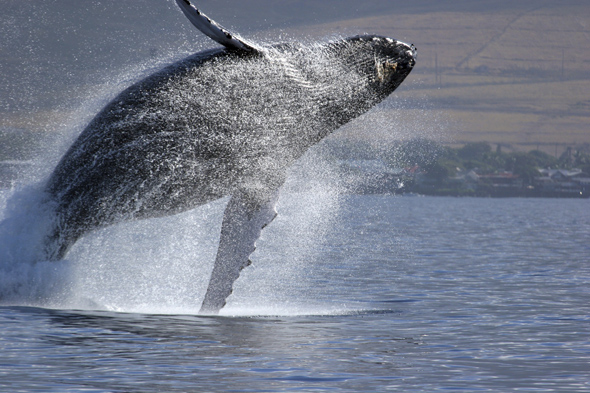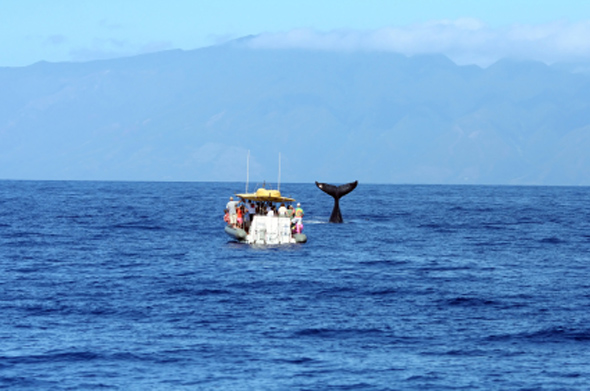HAWAII’S HUMPBACK WHALES: THE GENTLE GIANTS’ YEARLY VISIT

Hawaii enjoys several kinds of seasonal visitors to our shores each year, visitors that have become iconic, a pivotal part of the Hawaii experience. Tourists throng beaches heavily in our winter and summer months. Giant surf arrives on the North Shore every winter, attracting thousands of surf crazed visitors from all over the world.
An Annual Journey
Also enthusiastically awaited each year is the arrival of humpback whales, known to native Hawaiians as kohola. Their annual migration brings them to Hawaiian waters beginning in November, and their migratory peak population here comes in February and March.
The kohola travel thousands of miles from frigid Alaskan waters, and arrive in Hawaii to calve and to mate. The whales travel in pods, with males competing for the attentions of the females. During this season, calls of the whales can be heard from up to 20 miles away. Scientists have learned through years of extensive research that all of the males in a pod will sing the same “song”.
Incredibly, the whales do not feed in Hawaii waters, and will not feed again until after their long journey back to Alaskan waters.

Protecting the Kohola
The kohola were hunted to near extinction by a thriving whaling industry in the 19th and 20th centuries, which led to an eventual whaling moratorium in 1966. Humpback whales were declared an endangered species in 1988, and are now protected.
Each year, the Hawaiian Islands Humpback Whales National Marine Sanctuary conducts a whale count to provide important data about population and distribution. Part of the National Oceanic and Atmospheric Administration (NOAA), the program invites volunteers on all Hawaii islands to participate. Interestingly, individual whales can be identified by unique marking on their flukes, or tail fins.
Humpback whales are protected in Hawaiian waters, and approaching a humpback whale within 100 yards without a federal research permit is prohibited. Among the dangers faced by humpback whales in Hawaii waters are collisions with vessels and entanglement in fishing gear.

Whale Watching Tips
For those seeking to witness the annual migration, several tips are particularly useful:
- Plan your whale-watching trip during peak population months, from November to May, with February and March being the most active.
- The islands of Maui, Kauai and Hawaii see the greatest concentration of whales during the migration, although kohola can be found throughout Hawaii waters.
- Obey regulations, and keep a proper, safe distance of at least 100 yards when viewing from a vessel.
- Participate in preservation efforts by keeping beaches clean and debris free, participating only in responsible whale watching activities, support efforts to stop whaling, and support legislation, research and preservation efforts.
